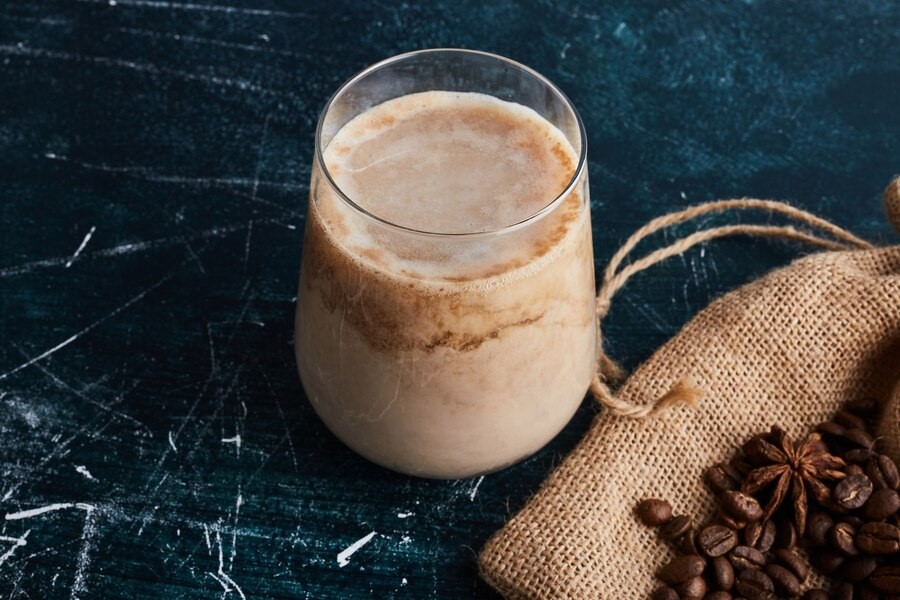In the world of coffee, the art of blending is not just a process of brewing, but more like a work of culinary art that creates unique flavors. This article takes us into the beauty of coffee blending, exploring the creativity behind each cup served.
The First Steps of Coffee Blending
1. Selection of Quality Coffee Beans
Understand the importance of selecting high-quality coffee beans as a key foundation in the art of blending. Factors such as variety, origin, and bean quality are key considerations.
2. Bagging and Processing
Coffee bean bagging and processing is a crucial early stage on the road to a high-quality cup of coffee. The step from fresh coffee fruit to green beans ready for the next stage, with an emphasis on the skill of maintaining the cleanliness and integrity of the beans.
A. Coffee Fruit Picking
Proper picking of coffee cherries at optimum maturity is key to ensuring good bean quality.
B. Pulp Removal
Pulp removal is the first step in processing, where the coffee fruit is cleaned of the pulp to access the beans inside.
C. Fermentation
The controlled fermentation process helps develop the flavor profile of the coffee bean by stimulating enzymes and detailing the fruit’s residual mucilage.
D. Laundering
Carefully washing the coffee beans stops the fermentation process and cleans the beans to remove any residue that may affect the flavor.
E. Drying
The drying process is an important step to carefully remove moisture from coffee beans, ensuring stability and avoiding negative influences on flavor.
F. Hulling
The hulling process removes the powdery coating and skin that protects the seeds during the drying process, maintaining the cleanliness and integrity of the seeds.
G. Grading
Grading or classification of beans is done to separate beans based on quality, size, and characteristics, helping in packaging and sales.
H. Collecting
The final step, bagging, involves carefully selecting the beans to create consistency in flavor and produce green coffee beans ready for the next stage.
3. Meticulous Roasting Method
Coffee roasting is a critical step in the art of coffee blending. From medium roast to dark roast, each roasting method has a unique influence on the flavor profile of the coffee beans. This article will detail the various roasting methods, exploring the influence of temperature, time, and technique towards creating the desired coffee flavor profile.
A. Light Roast
Light roasting preserves the authenticity and brightness of the coffee beans, creating a flavor profile that characterizes the authenticity of the coffee variety and fruity flavors.
B. Medium Roast
Medium roast achieves a balance between the authenticity of the coffee beans and the softness of the flavor, providing diverse flavor characteristics without losing varietal characteristics.
C. Medium-Dark Roast
This method deepens the flavor without sacrificing balance, creating complexity and a stronger body, often with a touch of chocolate or nuts.
D. Dark Roast
Dark roast provides full-bodied characteristics with a touch of deep roast flavor, resulting in a strong and rich coffee with a long aftertaste.
E. French Roast
French roast is a more extreme dark roast, achieving intensive roasted flavors and serving coffee with strong strength and aroma.
F. Separate Roasting Process
Some separate roasting methods, such as air-roasting or drum-roasting, exert a unique influence on the flavor profile, creating distinctive characteristics.
G. Effect of Temperature and Time
Temperature and time settings are key elements in roasting, affecting the degree of browning of the coffee beans and the development of the desired flavor characteristics.
H. Modern Roasting Techniques
Modern roasting techniques, such as fluid-bed roasting or roasting with precise temperature control, provide innovations in achieving optimal coffee flavor profiles.
4. Roasting Temperature and Time Settings
The coffee roasting process requires precision in temperature and time settings to achieve unique flavors. This article will explore the optimal temperature and time settings during the roasting process, by understanding how coffee bean varieties respond to temperature to achieve the desired results.
A. Initial Temperature
The initial roasting temperature is the starting point in shaping the flavor profile. Choosing the right starting temperature helps set the foundation for the desired characteristics of the coffee.
B. Warm up
Gradual heating at an initial temperature affects the development of flavor and aroma. This process opens the door for the development of complex coffee characteristics.
C. Understanding Varieties
Understanding how specific coffee bean varieties respond to roasting temperatures is key to creating flavor profiles that match the unique characteristics of each bean.
D. Peak Temperature
The peak roasting temperature achieves the desired browning without compromising the character of the coffee beans. Temperature control at this stage plays an important role in achieving the desired flavor.
E. Development Period
The development period, which covers a certain amount of time, affects the diversity of coffee flavors. A good understanding of how time plays a role at this stage is important.
F. How to Utilize Cooling
Utilizing the cooling process after roasting is key to creating flavor stability. Lowering the temperature appropriately after roasting can lock in the desired characteristics.
G. Customization for Each Batch
Each batch of coffee beans can be unique. Customizing the temperature and time for each batch is an important step in achieving consistency and satisfaction.
Through this in-depth understanding of the early stages of the art of coffee blending, baristas and coffee enthusiasts can grasp the essence of creating unique and quality flavors through a combination of method selection, precise temperature and time control, as well as careful experimentation, can design blends that produce a smooth taste that indulges the palate.
Read the most comprehensive coffee articles on KopiKita and find out everything you need to know about the world of coffee, from the types of beans to how to brew them.









